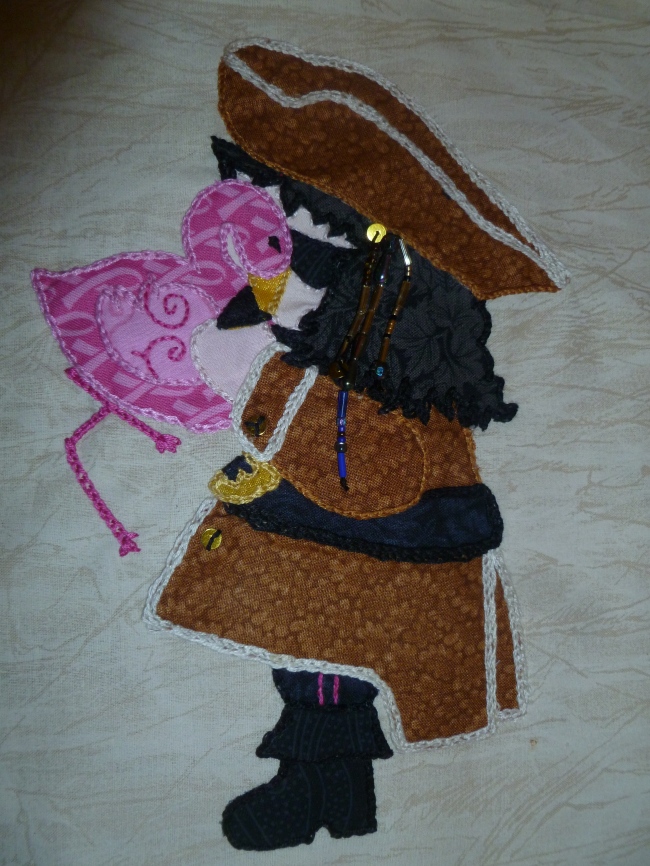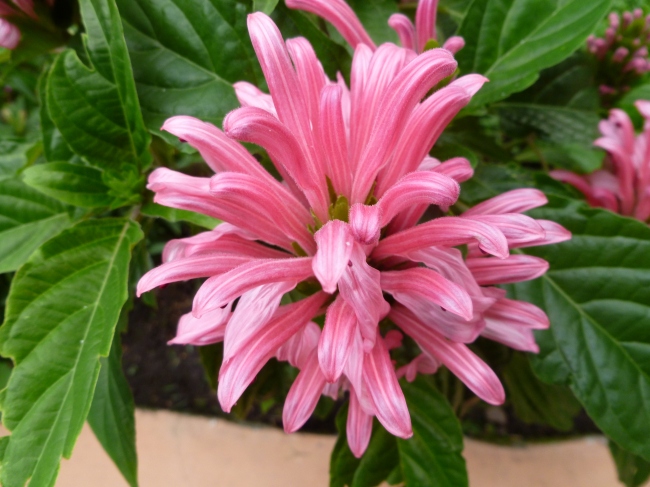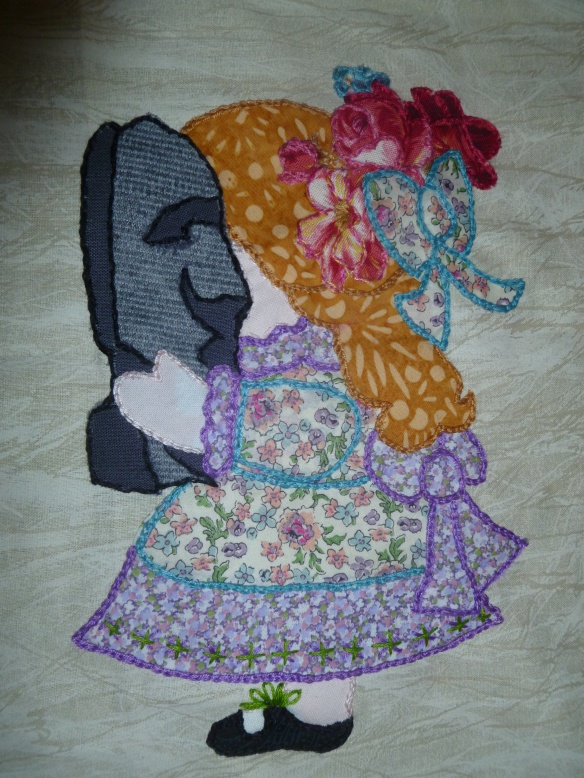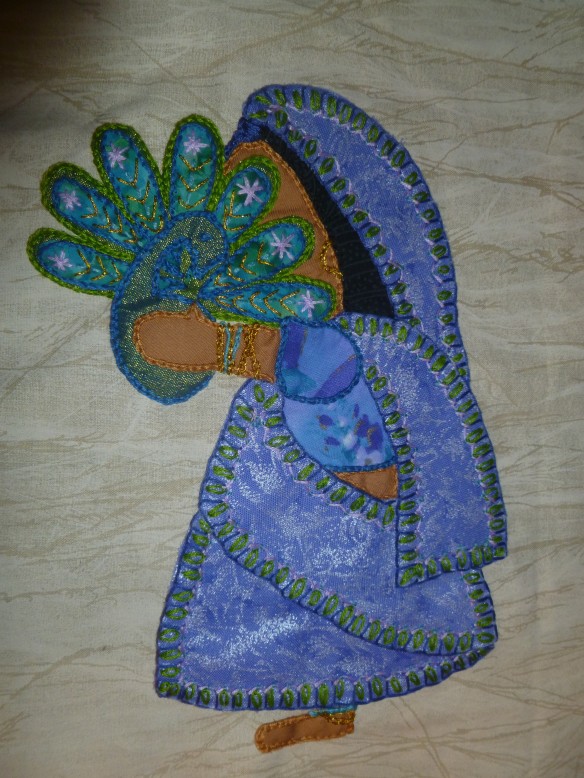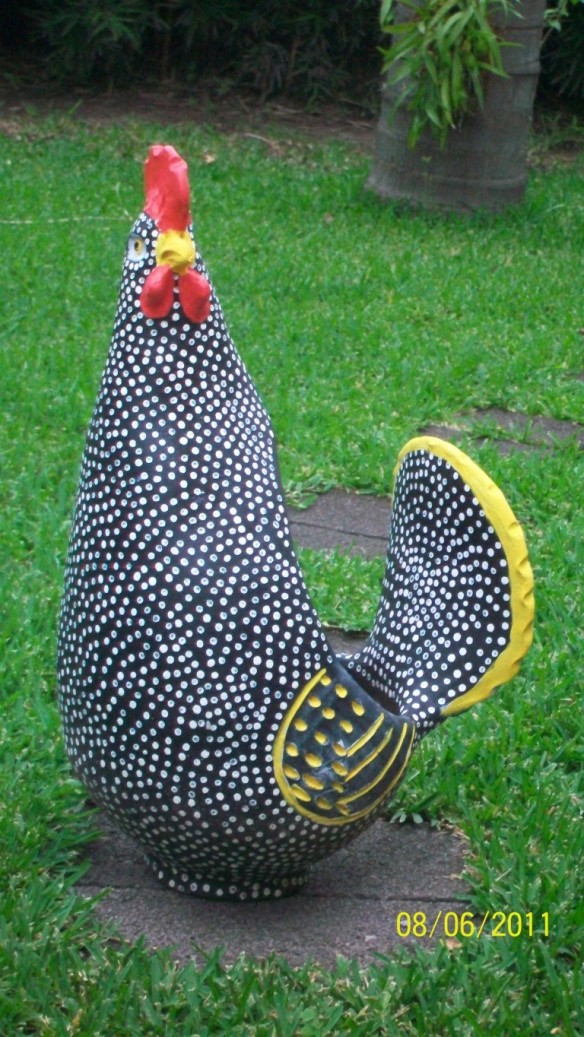I did not sail on a pirate ship to the Bahamas, I swear! That might have been fun (especially if Captain Jack Sparrow were also aboard), and while I sailed there as well, it was on a much tamer cruise ship over a long weekend — there was no wielding my cutlass!!. When I was trying to figure out how to depict the Bahamas as a Sunbonnet Sue version, I came across a beauty contest site in which contestants wore costumes from their countries. Most of the costumes were folk dresses, but the Bahamas’ contestant was dressed up as a sexy pirate, and her outfit is the source of my inspiration for this Sunny Sue. This Sunbonnet Sue is dressed a tad more conservatively, and mostly I was envisioning her as a female version of Johnny Depp’s character, “Captain” Jack Sparrow, in the “Pirates of the Caribbean” movie series. So, “Captain” Sunbonnet Sue is dressed in a tricorn hat, a jacket with long tails, and high black boots. Alas and alack! she’s lost an eye (covered with eye patch) and that’s precisely why I did not give her a cutlass…no accidental cuts, please! But I hope you noticed the beads, which are a nod to Captain Jack Sparrow’s beaded and knotted long tresses.
As you can imagine, the Bahamas’ history is rich with pirate lore. Almost everyone has heard of Blackbeard, the notorious Edward Teach. He was an unusally big and tall man, terrifying his own crew and the crews of the ships he attacked. Before each battle, Blackbeard would weave hemp into his beard and light it on fire — scary! He ruled Nassau, enforcing his version of law and justice, for about 5 years before he was killed off the coast of Virgina by the Royal Navy in 1718. It’s estimated that Blackbeard captured about 40 ships in those 5 years — a busy pirate, indeed. Before Blackbeard though, in the late 1600’s, Captain Henry Morgan, a Welsh member of the Royal Navy, attacked Spanish trips as they traveled between the Old and New Worlds. After he earned himself a knighthood, he was given the title of Deputy Governor of Jamaica and settled down as a wealthy sugar plantation owner. Who says piracy doesn’t pay?
However, the most evolved pirate was Calico Jack (real name: John Rackham). He received his nickname from the striped trousers and coat that he usually wore. When his pirate master did not attack a French man-of-war ship, Calico Jack seized his master’s ship, the Treasure, and sent his boss on his way in a small sailboat. Calico Jack then led his own pirates in many skirmishes. But why did I say he was the most evolved pirate? Well, even back in the 1720’s, he was open to women working in the non-traditional field of piracy. One woman, Mary Read, was already part of his pirate crew, and he eventually wooed Anne Bonney away from her husband. Anne, dressed and disguised as a man as was Mary ahead of her, joined his pirate crew. When a pirate-hunter on orders from Royal Governor Rogers attacked their ship in 1720, the (not-so) brave Calico Jack and his drunken crew cowered in the hold, while Anne and Mary fought off the attackers, but were eventually overpowered. Calico Jack was hanged for his crimes, but the ruthless and fearless female pirates, Anne Bonney and Mary Read, were both taken prisoners. They both claimed to be pregnant, and so were granted a reprieve from being hung like the rest of the crew. Mary died from a fever in her cell, but Anne had the baby and then disappeared into history. So, while Sunbonnet Sue enjoys masquerading as a pirate, she’s truly not a ruthless pirate. Or so I believe.
Even Captain Sunbonnet Sue enjoys the pretty pink flamingos though. The West Indian flamingo is also the Bahamas’ national bird, and what a great bird to show off Bahamian style, right? In the 1950’s the flamingo population on the island of Inagua, Bahamas, was down to only about 5,000. With the help of the National Audubon Society, a trust was created (the Bahamas National Trust). Under the Trust’s purview, the number of flamingos on Inagua grew to its current population of around 80,000. The Bahamas Wild Bird Protection Act now makes it illegal to harm or capture endangered or threatened species, including the West Indian Flamingo. Although it is a timid and shy bird, its long legs, long neck, and characteristic bright pink color make it a very special bird — they can be as tall as 5 feet. Even its large, heavy, down-curved bill is special and different from most other birds.
I hope you’ve enjoyed taking to the Caribbean seas with me this time around. I hope you feel inspired to don your pirate bikini and prowl the iridescent blue waters of the Bahamas, to buy some pink flamingos next time you’re at one of the big box stores and plant them in your front yard, to go for a sail (even if its just in your mind), to applique or embroider some pirates and flamingos of your own, or just to enjoy looking across the horizon to see what’s sailing towards you. I leave you to enjoy this gorgeous (flamingo) pink flower from my backyard…happy sailing!

